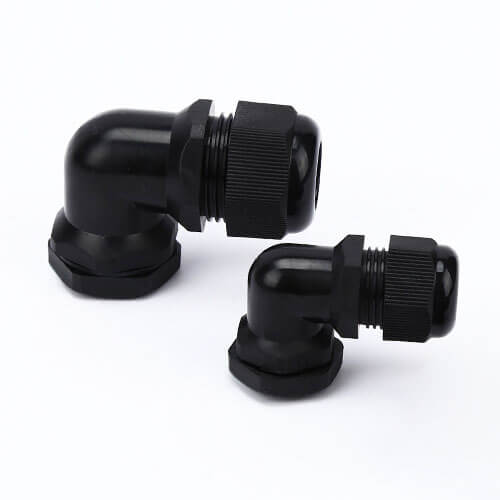Cable management is a crucial aspect of any electrical or industrial installation. When it comes to efficiently routing cables around tight corners or through confined spaces, elbow glands are the unsung heroes. In this article, we will delve into the significance of elbow gland, understand their core functions, and explore how they seamlessly integrate with cable gland connectors for streamlined cable management.
Decoding the Power of Elbow Glands
Elbow Glands: These specialized cable management components feature a 90-degree bend or elbow shape, allowing cables to make right-angle turns. They are essential for situations where space is limited or cables need to navigate corners smoothly.
Key Functions of Elbow Glands
- Space Optimization: Elbow glands optimize space by enabling cables to make right-angle turns, reducing the need for excessive bends and saving valuable room.
- Cable Protection: They shield cables from environmental factors such as dust, moisture, and contaminants, ensuring their longevity and reliability.
- Flexible Routing: Elbow glands provide flexibility in cable routing, allowing for precise direction of cables, even in tight spaces.
Elbow Glands and Cable Gland Connectors: A Perfect Synergy
Cable Gland Connectors: These cable management components secure and protect cables, ensuring safe and reliable connections. Elbow glands complement cable gland connectors by providing a secure and weatherproof right-angle cable entry or exit point.
Seamless Integration
- Elbow glands seamlessly integrate with cable gland connectors, offering a secure and weatherproof right-angle entry or exit point for cables routed through the gland.
- The combination of elbow glands and cable gland connectors provides a space-saving and organized cable management solution, particularly in confined spaces or applications with tight turns.
Applications of Elbow Glands
Elbow glands find extensive applications across various industries where efficient cable management in confined spaces is essential. Let’s explore some common use cases:
1. Control Panels
- Space Optimization: Control panels often have limited space, and cables must be neatly routed to optimize the internal layout. Elbow glands enable cables to make right-angle turns, saving valuable panel space.
2. Industrial Machinery and Automation
- Smooth Cable Routing: In industrial machinery and automated systems, cables may need to navigate tight corners. Elbow glands ensure that cables can do so without excessive bending, which could lead to damage or signal interference.
3. Renewable Energy
- Solar Installations: In solar panel installations, cables often need to navigate tight spaces on rooftops or mounting structures. Elbow glands facilitate precise cable routing in these scenarios.
4. Transportation
- Trains and Subways: In the transportation sector, where space is at a premium, elbow glands help route cables efficiently around corners and through tight spaces within train carriages and subway systems.
Choosing the Right Elbow Gland
Selecting the appropriate elbow gland for your specific application is crucial for efficient cable management. Consider these factors when making your choice:
1. Cable Diameter
Ensure that the elbow gland accommodates the cable diameters you are working with. The size of the cable entry or exit point should match the cable sizes for a secure fit.
2. Material
Elbow glands are available in various materials, including plastic, brass, stainless steel, and aluminum. Choose a material that suits your environmental conditions and durability requirements.
3. Environmental Conditions
Consider the environment where the elbow gland will be installed. Some environments may require special materials or coatings to withstand moisture, corrosive substances, or extreme temperatures.
4. Cable Entry and Exit Orientation
Determine whether you need a right-angle bend to the left or right, as this will depend on the specific cable routing requirements of your application.
Conclusion: Mastering Cable Management Efficiency with Elbow Glands
Elbow glands are indispensable tools for efficient cable management in confined spaces or situations requiring precise cable routing around corners. When combined with cable gland connectors, they offer a seamless and organized cable management solution, ensuring that cables can make right-angle turns without compromising their protection or functionality.
As you tackle cable management challenges in your projects, remember that elbow glands are your allies in optimizing space and ensuring flexible cable routing. By understanding their functions, applications, and selection criteria, you can make informed decisions to enhance cable management efficiency and reliability. So, the next time you encounter tight spaces or corners in your cable routing, turn to the versatile and space-saving solution provided by elbow glands.



